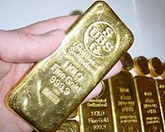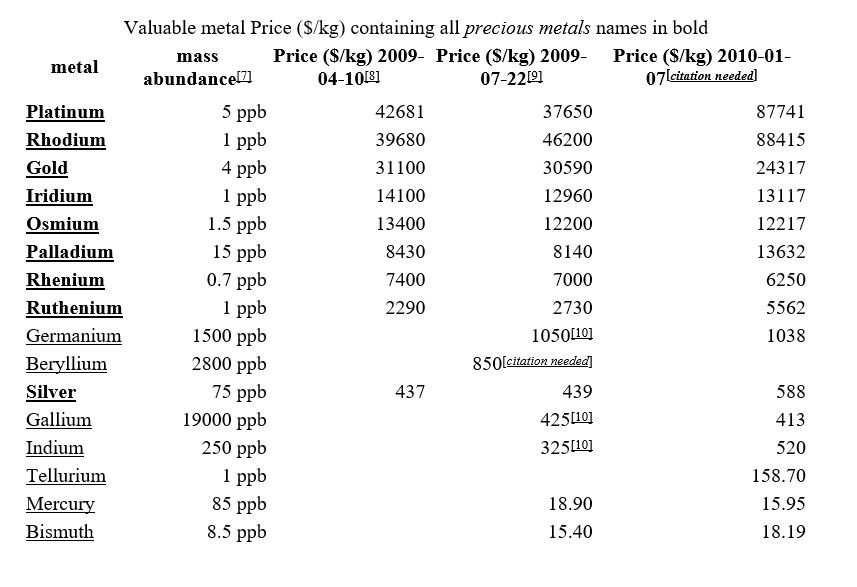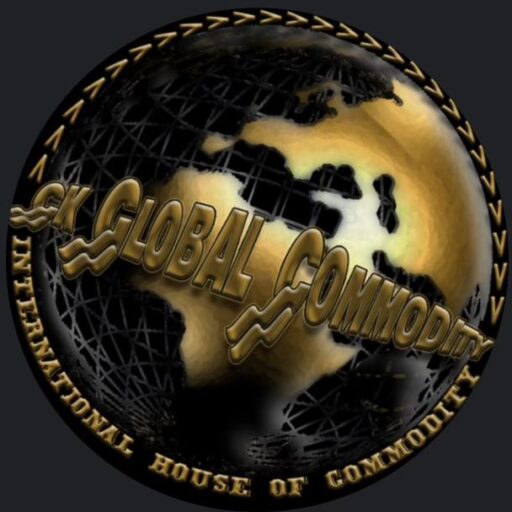A gold nugget
A precious metal is a rare, naturally occurring metallic chemical element of high economicvalue. Chemically, the precious metals are less reactive than most elements. They are usually ductile and have a high luster. Historically, precious metals were important as currency but are now regarded mainly as investment and industrial commodities. Gold, silver, platinum, and palladium each have an ISO 4217 currency code.
The best-known precious metals are the coinage metals gold and silver. While both haveindustrial uses, they are better known for their uses in art, jewelry and coinage. Other precious metals include the platinum group metals: ruthenium, rhodium, palladium, osmium, iridium, and platinum, of which platinum is the most widely traded.
Assortment of precious metals
The demand for precious metals is driven not only by their practical use but also by their role as investments and a store of value. Historically, precious metals have commanded much higher prices than common industrial metals.
Bullion

1kg gold bar (ingot)
Gold and silver, and sometimes other precious metals, are often seen as hedges against bothinflation and economic downturn. Silver coins have become popular with collectors due to their relative affordability, and, unlike most gold and platinum issues which are valued based upon the markets, silver issues are more often valued as collectables, far higher than their actual bullion value.
Aluminium
A precious metal that became common was aluminum. Although aluminum is one of the most commonly occurring elements in the Earth’s crust, it was at one time found to be exceedingly difficult to extract from its various ores. This made the little available pure aluminum, which had been refined at great expense, more valuable than gold. Bars of aluminum were exhibited alongside the French crown jewels at the Exposition Universal of 1855, [citation needed] and Napoleon III’s most important guests were given aluminum cutlery, while those less worthy dined with mere silver. Additionally, the pyramidal top to the Washington Monument is made of 100 ounces of pure aluminum. At the time of the monument’s construction, aluminum was as expensive as silver. Over time, however, the price of the metal has dropped; the invention of the Hall-Héroult process in 1886 caused the high price of aluminum to collapse permanently. [citation needed]
Bismuth and tellurium
Bismuth and tellurium are the only two metals which have abundances less than 10 -8 by mass part (g/g) in the Earth’s crust, but which are currently not of high economic value. [citation needed]
Rough world market Price ($/kg)



